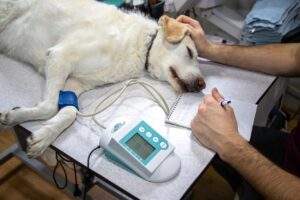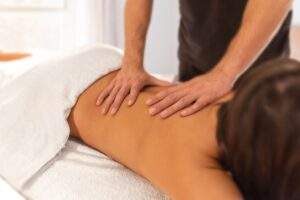Things To Know About Total Motion Release Physical Therapy

Many physical therapists know about all the modalities and techniques to reduce pain and find balance. Total Motion Release physical therapy is a unique, all-encompassing method of pain management. It has helped many people with difficulties such as weakness, restricted movement, stiffness, and discomfort in nearly every aspect of the body.
What Is Total Motion Release?
Physical therapist Tom Delanzo-Baker created Total Motion Release (TMR) after recognizing the necessity to include data into a patient’s home program. Physical therapists may use this method to track patient responses and determine which exercises were the most useful. It all starts with isolating the “session’s issue.”
Exercises including sustained holds and repetitions are used to balance both sides. Everything is documented so that necessary adjustments can be made. Total Motion Release differs from traditional thinking in that it does not require exercising the weak side to strengthen it. It’s the exact opposite. Because the human body is a cohesive system, pain and movement in one place may be influenced by pain and movement in another.
TMR is a novel, patient-centered technique for treating a wide range of musculoskeletal dysfunctions, including stiffness, joint motion limits, and weakness. Total Motion Release (TMR) is one of the effective physical therapy options to alleviate pain and discomfort. It lifts constraints that are known to contribute to:
- Degenerative discs
- Arthritis
- Muscle strains
- Tendonitis
- Ligament sprains
- Neck and back pain
How does TMR Work?
Unlike conventional physical therapies, which focus on the body area that is suffering pain or imbalance, Total Motion Release focuses on unfettered motion in a different section of the body to create realignment inside the body.
TMR would, for example, target the whole range of motion in the left shoulder to relieve the constraints in the body if you were experiencing discomfort in your right shoulder. TMR teaches patients how to use various exercises to treat specific problems and unlock the body’s potential.
Total Motion Release Treats Whole Body
Total Motion Release is a holistic therapy, which means it treats pain throughout the body rather than just the place generating it. TMR is able to provide long-term comfort and balance by addressing the full body’s movement patterns.
Realignment, Regaining Balance And Strength
Many people believe that a lack of strength causes musculoskeletal pain and weakness. According to Total Motion Release physical therapy, the true source of pain and weakness is a movement balance disparity. Many of the falls that occur on a daily basis are caused by an imbalance in movement capabilities rather than a lack of strength in one region of the body. Patients will notice a rapid recovery of strength after realigning the musculoskeletal system’s abnormalities.
The Power For Healing
Total Motion Release is a pain and imbalance treatment that is simple to apply. You will be able to utilize the exercises related to the pain and movement concerns you are experiencing for the rest of your life to treat recurring issues after learning how to do them. TMR may be able to help if you’re having problems with pain or motion while walking, sitting, or standing.
What To Expect During TMR Sessions?
The patient’s entire body is examined for constraints that may be leading to their dysfunction. Asymmetries on the right and left sides of the body are assessed and subsequently balanced using particular movements. Many people assume their pain is localized, which is sometimes true. However, because of the interrelated nature of the human body, constraints outside of the uncomfortable location can, and often do, contribute to the discomfort.
The areas of constriction are freed in a very comfortable manner using this whole-body method. Despite the fact that this approach necessitates the patient’s active participation and effort, it should never be painful. This is what makes this treatment unique and lovely in comparison to many other typical physical therapy techniques. Total Motion Release can be useful in providing you control over your condition if discomfort limits you from enjoying life.
What Role Does TMR Play In The Treatment Of Cerebral Palsy Patients?
When a child is diagnosed with cerebral palsy, it means they have a problem with the part of the brain that controls movement and muscle tone. While many children with cerebral palsy do not have any changes in their mental development, their motor control and mobility might be severely hampered. TMR can assist children with cerebral palsy in achieving the following goals:
- Improve your posture by standing up straighter.
- Efforts should be made to improve motor function in general.
- While walking, develop a longer stride and a faster pace.
Final Thoughts!
TMR is a terrific pain remedy at a time when everyone is coping with remaining at home as much as possible. Contact your physical therapist if you’re seeking a solution you can try at home.







